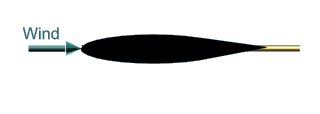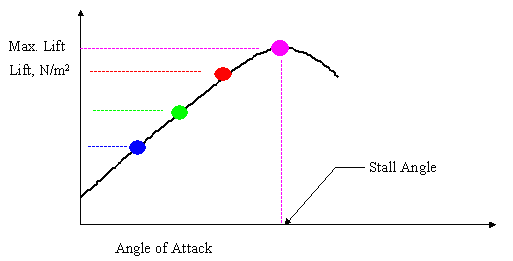 |
|||||
| Home | Research | For Teachers | HISTORY Level 1 Level 2 Level 3 |
PRINCIPLES Level 1 Level 2 Level 3 |
CAREER Level 1 Level 2 Level 3 |
| Gallery | Hot Links | What's New! | |||
| Web Administration and Tools | |||||
 |
|||||
| Home | Research | For Teachers | HISTORY Level 1 Level 2 Level 3 |
PRINCIPLES Level 1 Level 2 Level 3 |
CAREER Level 1 Level 2 Level 3 |
| Gallery | Hot Links | What's New! | |||
| Web Administration and Tools | |||||
![]()
If you consider the definitions cited by air authorities, a boy flying a kite could be construed to be a pilot in charge of an airplane! Ponder the idea a moment and it may not appear quite as absurd as it seems at first glance.
A kite is an inclined plane, the weight of which is supported in the air by the reaction of the wind flowing against it. If we substitute for the string, which holds the kite against the wind, the engine and propeller of an airplane, which move the wings forward against the airflow, we will see that the analogy of the kite is not without some validity.
The wings of an airplane are so designed that when moved through the air horizontally, the force exerted on them produces a reaction as nearly vertical as possible. It is this reaction that lifts the weight of the airplane.
An airfoil, or airfoil section, may be defined as any surface designed to obtain a reaction from the air through which it moves, that is, to obtain lift. It has been found that the most suitable shape for producing lift is a curved or cambered shape.
The camber of an airfoil is the curvature of the upper and lower surfaces. Usually the upper surface has a greater camber than the lower.
What, then, causes this lift, you may ask.
Air flowing around an airfoil is subject to the Laws of Motion discovered by Sir Isaac Newton. Air, being a gaseous liquid possesses inertia and, therefore, according to Newton's First Law, when in motion tends to remain in motion. The introduction of an airfoil into the streamlined airflow alters the uniform flow of air. Newton's Second Law states that a force must be applied to alter the state of uniform motion of a body. The airfoil is the force that acts on the body (in this case, the air) to produce a change of direction. The application of such a force causes an equal and opposite reaction, in compliance with Newton’s Third Law, called, in this case, lift.
![]()

![]()

As the air passes over the wing towards the trailing edge, the air flows not only rearward but downward as well. This flow is called downwash. At the same time, the airflow passing under the wing is deflected downward by the bottom surface of the wing. Think of a water ski or surfboard planing over the water. In exerting a downward force upon the air, the wing receives an upward counterforce. Remember Newton's Third Law—for every action there is an equal and opposite reaction. Therefore, the more air deflected downward, the more lift is created. Air is heavy; its weight exerts a pressure of 14.7 Ibs per square inch at sea level. The reaction produced by the downwash is therefore significant.

The phenomenon defined by Bernoulli's Principle also has an effect in the production of lift by the wing moving through the air. Scientist Daniel Bernoulli discovered that the total energy in any system remains constant. In other words, if one element of an energy system is increased, another decreases to counter balance it. Take the example of water flowing through a venturi tube. Being incompressible, the water must speed up to pass through the constricted space of the venturi. The moving water has energy in the form of both pressure and speed. Within the venturi tube, pressure is sacrificed (decreased) to accelerate the speed of the flow.
Air is a fluid, just like water, and can be assumed incompressible insofar as speed aerodynamics is concerned. As such, it acts exactly the same way as water in a venturi tube.
Picture the curved upper surface of a wing as the bottom half of a venturi tube. The upper half of this imaginary tube is the undisturbed airflow above the wing.
Air flowing over the wing's upper surface accelerates as it passes through the constricted area just as it does in the venturi tube. The result is a decrease in pressure on the upper surface of the wing that results in the phenomenon known as lift.
Relative airflow is a term used to describe the direction of the airflow with respect to the wing. In other texts, it is sometimes called relative wind. If a wing is moving forward and downward, the relative airflow is upward and backward. If the wing is moving forward horizontally, the relative airflow moves backward horizontally. The flight path and the relative airflow are, therefore, always parallel but travel in opposite directions.

Relative airflow is created by the motion of the airplane through the air. It is also created by the motion of air past a stationary body or by a combination of both. Therefore, on a take-off roll, an airplane is subject to the relative airflow created by its motion along the ground and also by the moving mass of air (wind). In flight, however, only the motion of the airplane produces a relative airflow. The direction and speed of the wind have no effect on relative airflow.
The angle at which the airfoil meets the relative airflow is called the
angle of attack.
As the angle of attack is increased, the changes in pressure over the upper and lower surfaces and the amount of downwash, that is air deflected downward, increase up to a point (the stalling angle). Beyond this angle, these changes in pressure decreases.
If we consider all the distributed pressure on the wing to be equivalent to a single force, this force will act through a straight line. The point where this line cuts the chord of an airfoil is called the center of pressure.
Thus, it will be seen that as the angle of attack of an airfoil is increased up to the point of stall, the center of pressure will move forward. Beyond this point of stall, the center of pressure will move back. The movement of the center of pressure causes an airplane to be unstable.
The information in this section has been extracted from several sources. Those sources have been contacted and permission to use their material on our site is pending. However, the format in which this material has been presented is copyrighted by the ALLSTAR network.
Send all comments to ![]() aeromaster@eng.fiu.edu
aeromaster@eng.fiu.edu
© 1995-98 ALLSTAR Network. All rights reserved worldwide.
Updated: February 23, 1999